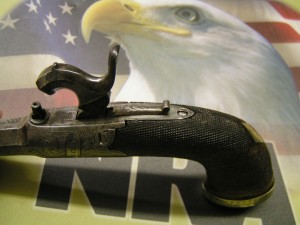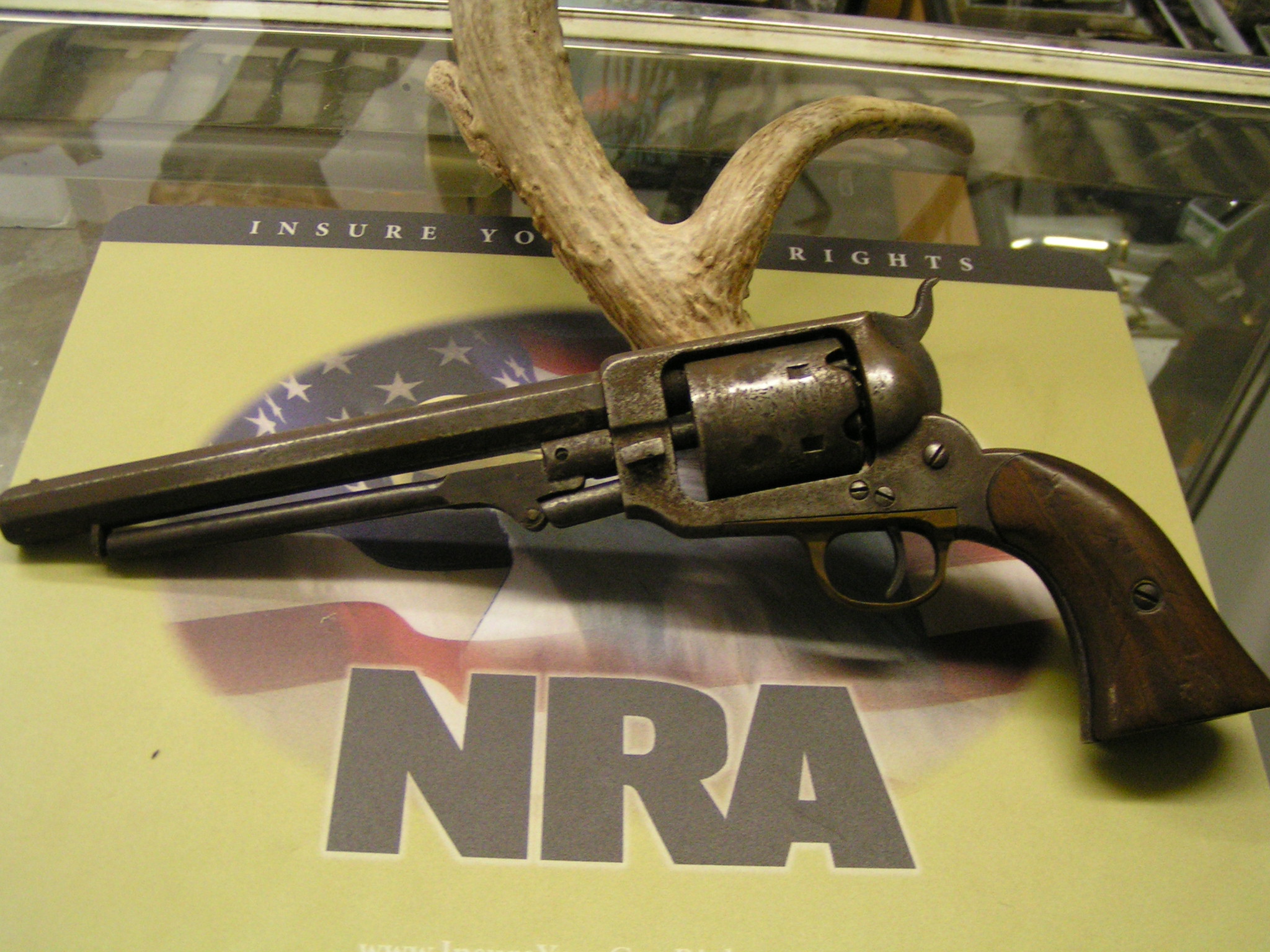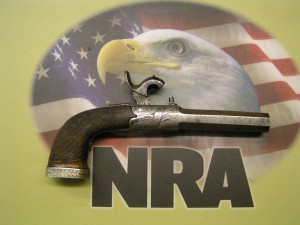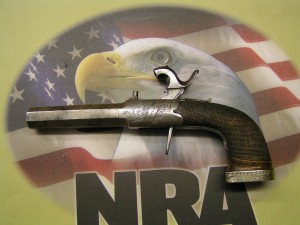By John Hackett:
From the 18th century on gunmakers in both England and the Colonies made great numbers of small, concealable pistols to be used for self-defense. The smallest of these were described as “muff pistols”, or “muff guns”; as they were often carried inside a lady’s hand warming muff. Gentlemen of the time also used muffs, but they often carried them in their pockets. By the mid 1800’s these types of small pistols became more commonly referred to as “derringers” after the renowned American gunmaker Henry Deringer of Philadelphia.
This month’s old gun is a .50 caliber percussion muff pistol made in London by R.S. Clark about 1840.
Carrying a loaded pistol in one’s pocket could be as dangerous to the user as it could be to the potential assailant. The better quality guns of the time had features to make concealed carry safer. This Clark pistol comes with a safety bar that slides forward to lock the hammer into the half-cock position. This eliminates the chance of accidental discharge from a blow to the hammer driving it onto the cap.
This pistol also features a folding trigger that allows the pistol to be easily retrieved from a confined space. Triggers are particularly susceptible to snagging, and on these small pistols there is really no room to install a trigger guard. Thus early gunmakers devised drop-down triggers on their pistols. When the hammer is cocked a cam rolls over the back portion of the trigger to force it to drop down out of the frame into a position where it can engage the sear.
Like most muff guns of this time period, the barrel of this Clark pistol unscrews for loading. With the barrel off 5 to 10 grains of black powder is deposited into a recess in the frame. A lead ball is placed on top of this, and then the barrel screwed back into place. A cap placed on the nipple and the pistol is ready to fire.
Due to the light charge one might think that being shot with this pistol might only be more of an annoyance than anything. Especially considering that the ball would most likely need to pass through a heavy leather top coat and several layers of clothing before getting to an assailant. But due to the screw in barrel design a ball lager that the bore diameter could be used. Screwing the barrel onto the ball actually swages the ball partially into the bore. Doing this allows the load to generate for more muzzle energy that a traditional patched ball.
Most of these antique muzzleloaders were made by individual gunsmiths or small manufacturing firms prior to the era of mass production in the late 19th century. There were literally thousands of these gunmakers in Europe and America. Most of the guns were unsigned, with no sure way to identify the maker. In these cases values are based on such factors as probable maker, condition, quality of construction, and the style & extent of ornamentation. Some may have considerable values, in the thousands of dollars. Most are valued somewhat lower in the $100 to $500 range.
This particular specimen is signed by Clark, who did make better quality arms. The finish of the pistol appears to be original, and the gun functions as it should. On close inspection some of the internal parts have been repaired, or completely refabricated over the past 175 years. In most cases this doesn’t seem to affect the value as long as they are quality repairs. I have seen similar condition and quality muff pistols sell in the past couple of years for around the $400 to $500 price range.

This Clark muff pistols is equipped with a safety bar that holds the hammer in place preventing accidental discharge while carried concealed.



















